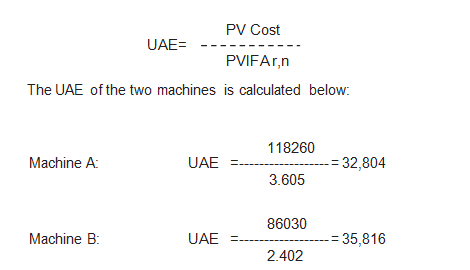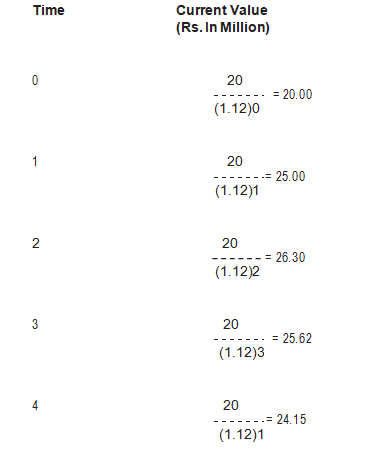Answer:
Special Decision Situations:- Special Decision Situations are those where there are mutually exclusive projects, where a project can be deferred by one or more years, where the economic life of a project is not predetermined and fixed, where the investment and financing side of the project are related. In addition, it looks at evaluation of overseas investment proposals and investment in capabilities. It id divided into seven sections:-
- Choice between mutually exclusive projects of unequal life.
- Optimal Timing decision
- Determination of economic life
- Interrelationship between investment and financing aspects
- Inflation and capital budgeting
- International capital budgeting
- Choice between mutually exclusive projects of unequal life:- Mutually exclusive projects are those projects out of which we
For Example:-Alpha Ltd. is considering two machines, A and B. Though designed differently, they serve the same function. Machine A, costs Rs. 75,000 and lasts for 5 years. Its annual operating cost will be Rs. 12,000. Machine B, cists Rs. 50,000 but lasts for only 3 years. Its annual operating costs will be Rs. 20,000. Assuming discount rate 12%
How should Alpha Ltd. Choose between the two machines?


The present value of costs associated with machine b is lower than that of machine A. Based on such a comparison, one may argue that , machine B is preferable to machine A.
For a proper comparison of the tow alternative, that have different lives, we have to convert the present value of costs into a uniform annual equivalent (UAE). The UAE is simply:-

The choice between machines A and B can be made by comparing their UAE. Since the UAE of machine A is lower than the UAE of machines B, machine A ir preferable to machine B.
- Optimal Timing:- In real life, an investment is rarely a “now or never” proposition. Typically, it can undertaken now or at some point of time in the future. Given this option, the issue of optimal timing assumes significance.
Under conditions of certainty, the optimal timing may be determined by using the following procedure:
- Examine alternative dates when the investment can be made.
- Estimate the net future value as of each alternative date and convert the same to its current value.
- Choose the timing that has the highest current value.
This procedure may be explained with the help of an example. Alpha Ltd. is evaluating different dates for investing in a project. The net present value for various dates is as follows:
| Time | Net Future Value (Rs. In Million) |
| 0 | 20 |
| 1 | 28 |
| 2 | 33 |
| 3 | 36 |
| 4 | 38 |
The discount rate applicable for the project is 12 percent. Hence the current value for different timing options is as follows:

The optimal timing is year 2 as it maximizes the current value.
- Determination of Economic Life:- A distinction may be made between the physical life and the economic life of an asset. The physical life of an asset represents the number of years it can be used to produce a certain output by regular maintenance and repair. The economic life of an asset refers to the number of years the asset should be used to produce a certain output.
The economic life of an asset is influenced by the behaviour of operating and maintenance costs on the one hand and capital costs on the other. Operating and maintaining costs cover labour, material and power expenses to operate, maintains and repair the asset. Capital costs, also referred to as ownership costs, represent the decline in the value of the asset over time.
- Interrelationship between investment and financing aspects:- The most commonly followed procedure for capital budgeting involves four steps namely:
- Forecast the post-tax cash flows of the project.
- Assess the riskiness of the project
- Estimate the post-tax weighted average cost of capital
- Calculate the net present value.
- Inflation and Capital Budgeting:- Inflation has been a persistent feature of the Indian economy. Hence, it should be properly considered in capital investment appraisal. Since the cost of capital, the discount rate, is typically expressed in nominal terms, all the cash flows should also be expressed in nominal terms.
- International Capital Budgeting:- In international capital budgeting we have to come up with the forecasted exchange rates. Then we have to convert all the dollar cash flows into rupees. And then we have to calculate the Net Present Value in rupees with the help of rupee discount rate.
Total Views: 77
